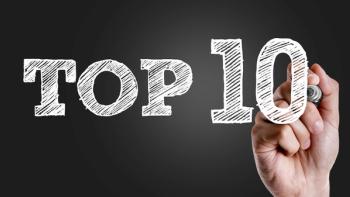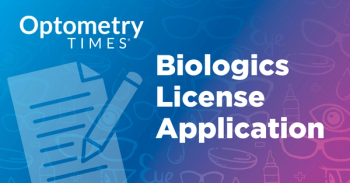
Chronic vaping has potential to contribute to poor tear quality and dry eyes, literature review suggests
The study also discovered a need for more blatant labeling on e-liquid containers to help reduce accidental contact with the ocular surface.
A literature review investigating the effects electronic cigarettes (e-cigs) and vaping have on the ocular surface found that vaping can be a potential contributing factor to the presence of dry eye disease in the form of reducing the quality and stability of the tear film. The study overviewed 18 studies on e-cigs, with non-intended ocular surface exposures and intended exposures on the ocular surface found to be associated with the use of e-cigs.1
“Long-term use of e-cigs may be associated with a reduced level of tear productions,” the authors, led by Nilanga Aki Bandara, wrote. “Exploring this further, the reduced amount of tear production could be due to use over the long term in combination with the effects of various aldehydes, which have the potential to cause lipid peroxidation, thereby damaging the tear film’s lipid layer and impacting the stability of the tear film. This could lead to a long-term reduction in tear production.”
The authors found that acute exposure to e-cig use led to an increase in mean corneal epithelial thickness in all five zones (central, superior, inferior, nasal, and temporal), as discovered by Munsamy et al.2 However, these findings were no statistically significant.
For chronic exposure, ocular surface malignancies, changes in tear film stability and quality, tear production, corneal epithelial thickness, average loss of meibomian glands in the upper and lower lid, and dry eye symptoms and ocular irritation have been documented.1
The review cited that non-intended exposures, caused by e-cigs or vaping products exploding, also have a potential to cause ocular trauma. While these accidents are not considered normal in the routine use of e-cigs and vaping products, some of the documented injuries associated with non-intended exposures include corneal injury (epithelial defects and corneal burn), subconjunctival hemorrhage, and black particulate accumulation in the tear film and conjunctiva. Additionally, these injuries can vary in severity.1
Another potential for ocular surface damage is in accidental exposure to e-liquid, with e-liquid containers being mistaken for eye drops. Damage caused by ocular contact with e-liquid has ranged from mild eye irritation to ocular chemical injury. The authors noted that to avoid accidental ocular contact with these liquids, clear labeling with warning messages and distinct containers for e-liquids could help decrease these occurrences.1
The authors noted that long-term studies are needed in the future to better understand the long-term impacts of vaping on the ocular surface, as this data is currently lacking. They cited that 68% of studies were either case reports or small case series on e-cigs and the ocular surface.1
References:
Bandara NA, Burgos-Blasco B, Zhou XR, et al. The impact of vaping on the ocular surface: A systematic review of the literature. J. Clin. Med. 2024;13(9),2619.
https://doi.org/10.3390/jcm13092619 Munsamy A, Bhanprakash B, Sirkhot A, et al. A pre-test post-test assessment of non-invasive keratograph break up time and corneal epithelial thickness after vaping. Afr. Health Sci. 2019;19, 2926–2933.
Newsletter
Want more insights like this? Subscribe to Optometry Times and get clinical pearls and practice tips delivered straight to your inbox.













































